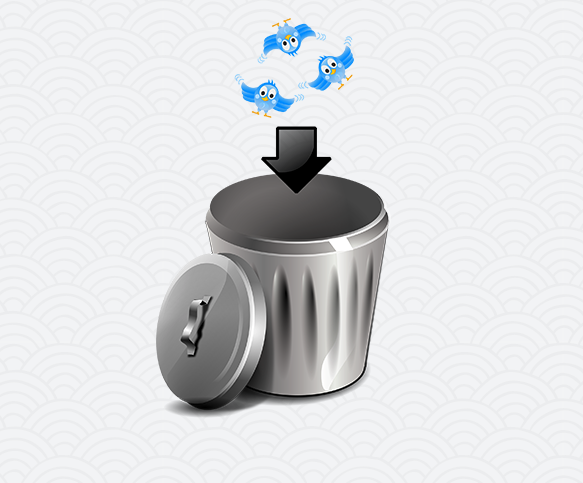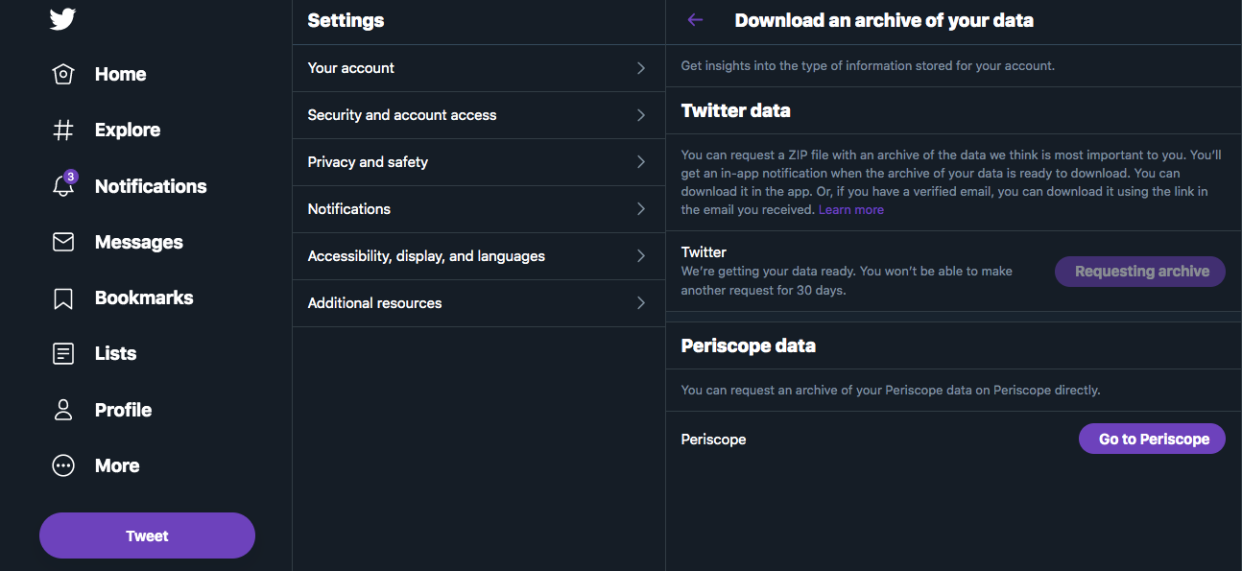You Should Probably Delete All of Your Old Tweets—in Just 3 Steps
You’re probably not the same person you were five years ago. And even if you are, Twitter definitely isn’t the same place it was in its early days. The once-freewheeling, low-stakes website for throwing bad jokes into the abyss has since transformed into an enormous public forum inhabited by just about everyone who’s anyone.
🖥 Tech can be tricky. We’ll be your support.
There’s no good reason your tweets of yore should still exist when there’s every good reason to get rid of them. Ready to take the dive? Here’s what to do next.
How to Delete Your Old Tweets

There are effectively two ways to delete your tweets. The first is a service like Tweet Delete, which simply plugs into your Twitter account and goes to town. Tweet Delete is free and easy, but incomplete—it will only rid the world of your 3,200 most recent tweets. Let’s call this “delete lite.”
The second approach is more involved and generally comes with a fee. Take TweetEraser. At $6.99 price tag, it’s a much more thorough scrub that will get rid of all of your tweets, forever. Let’s call this “delete pro.”
The reason for the two tiers comes down to a limitation in Twitter’s Application Programming Interface (API). Twitter gives applications (like these tweet-deletion programs) access to only your most recent tweets, while the rest are inaccessible. You can still find these in your feed (and so can other people).
You might go through and manually delete them yourself, but that could take a pretty long time, since they’re out of range for delete lite apps. Delete pro tools generally get around this limitation by asking you to upload an archive of your tweets—which gives them a full map instead of the limited one they’d get from Twitter's API—thereby bypassing Twitter’s API limitations.
There’s one more option: Use a delete lite method like Tweet Delete over and over again, each time sloughing off the 3,200 most recent tweets on your account. Depending on your number of tweets, this might be feasible, if arduous. And if you have fewer than 3,200 tweets in total, we admire your restraint.
Step #1: Request your Twitter archive.
Whichever path you choose, your first step should be to request your Twitter archive. If you’re doing a light delete, this is just for posterity, so you can skip it. But full deleters may need to go through with it.
To request your Twitter archive: Navigate to Twitter.com > Click the More button on the left rail > Settings and Privacy > Your Account > Scroll until you see “Download an archive of your data”> Enter your password > Click the Request Archive button.

Twitter will warn you that this process can take a little bit of time, but when your archive is done, it’ll be emailed to the account associated with your Twitter. If you don’t get it, revisit our button friend and click again for another email.
Step #2: Start the purge.
Now that you have your archive, it’s time to get down to business. Simply connect your Twitter account to your deletion mechanism of choice and follow its instructions. Whatever the method, don’t expect the results to be instant. It’ll take Twitter some time to properly respond to your exodus of tweets and update the numbers that appear on your profile accordingly. If things seem strange, wait a bit, especially if your method is running Tweet Delete repeatedly to cull more than 3,200 tweets.
Step #3: Stay vigilant.
Once you’ve dispensed with your archive, you’ll have a choice about how to go forward. With Tweet Delete, you can set the app to automatically remove any tweets older than a certain age. This can be great for maintaining hygiene, but it requires you to let Tweet Delete have constant access to your Twitter account (and while Tweet Delete shows no indications of being malicious, this is a security risk). Alternatively, you could go in and re-delete on a routine basis, or simply start building up a new archive until you get anxious again.
If you do set a service to automatically delete your tweets, you may also want to consider finding a way to archive them in real time—especially if you are a data hoarder. One option, the one I use, is the IFTTT service to immediately archive a tweet into a spreadsheet the moment it is tweeted. That way, when it ages out and gets deleted, you’ll already have a backup tucked away outside of Twitter.
There! Now you’re free from the chains of your old tweets. Just remember: Going forward, the best way to stay sane is simply to never tweet at all.
🎥 Now Watch This:
You Might Also Like
